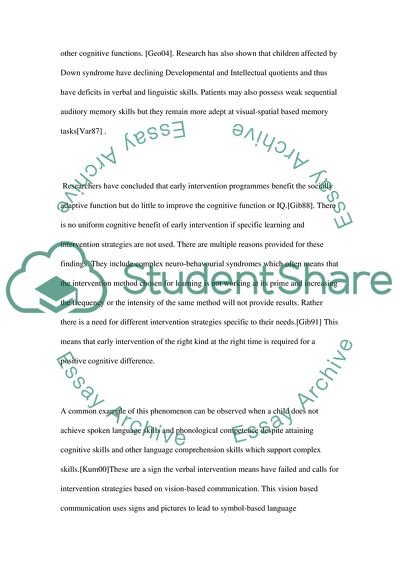Cite this document
(Down's Syndrome Children Require Unique Intervention Strategies for Research Paper, n.d.)
Down's Syndrome Children Require Unique Intervention Strategies for Research Paper. Retrieved from https://studentshare.org/psychology/1749078-downs-syndrome-children-require-unique-intervention-strategies-for-them-to-progress-in-education-and-socially-discuss
Down's Syndrome Children Require Unique Intervention Strategies for Research Paper. Retrieved from https://studentshare.org/psychology/1749078-downs-syndrome-children-require-unique-intervention-strategies-for-them-to-progress-in-education-and-socially-discuss
(Down'S Syndrome Children Require Unique Intervention Strategies for Research Paper)
Down'S Syndrome Children Require Unique Intervention Strategies for Research Paper. https://studentshare.org/psychology/1749078-downs-syndrome-children-require-unique-intervention-strategies-for-them-to-progress-in-education-and-socially-discuss.
Down'S Syndrome Children Require Unique Intervention Strategies for Research Paper. https://studentshare.org/psychology/1749078-downs-syndrome-children-require-unique-intervention-strategies-for-them-to-progress-in-education-and-socially-discuss.
“Down'S Syndrome Children Require Unique Intervention Strategies for Research Paper”, n.d. https://studentshare.org/psychology/1749078-downs-syndrome-children-require-unique-intervention-strategies-for-them-to-progress-in-education-and-socially-discuss.


